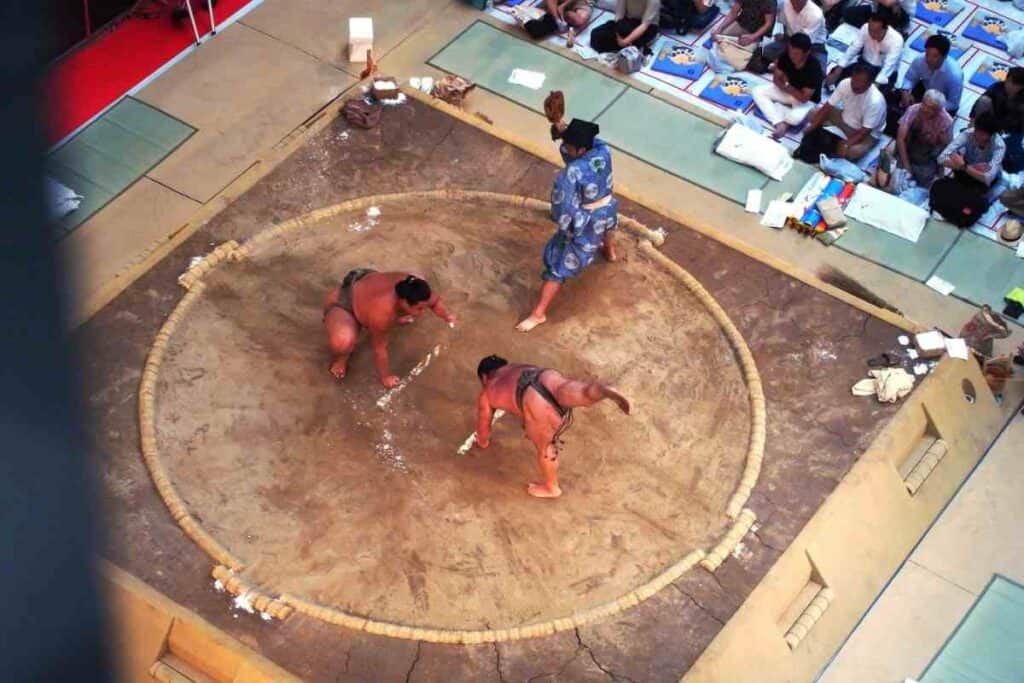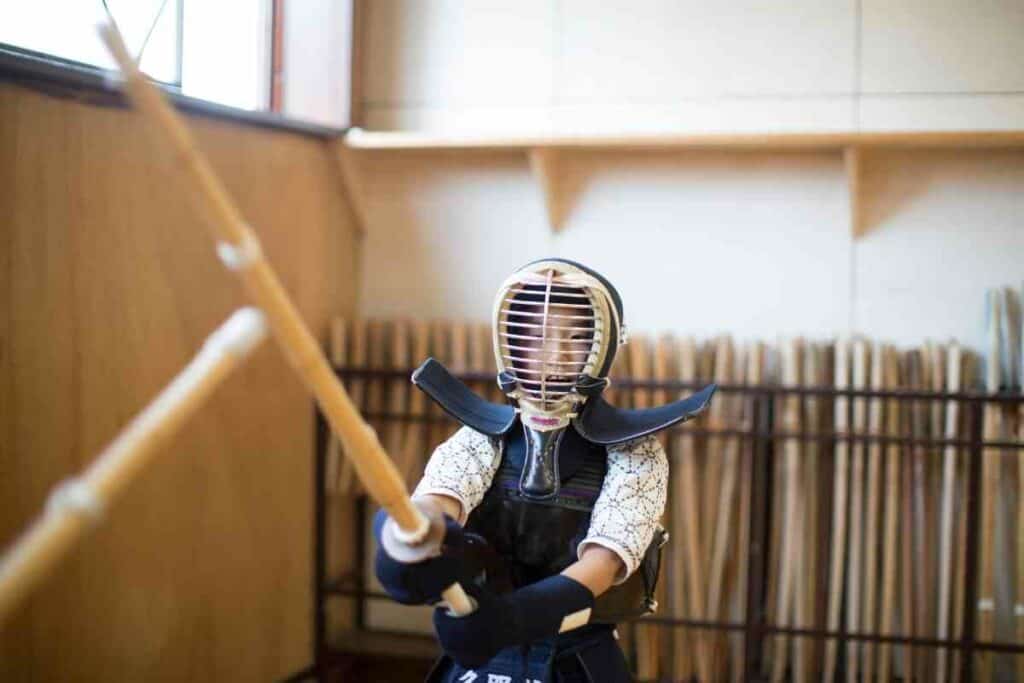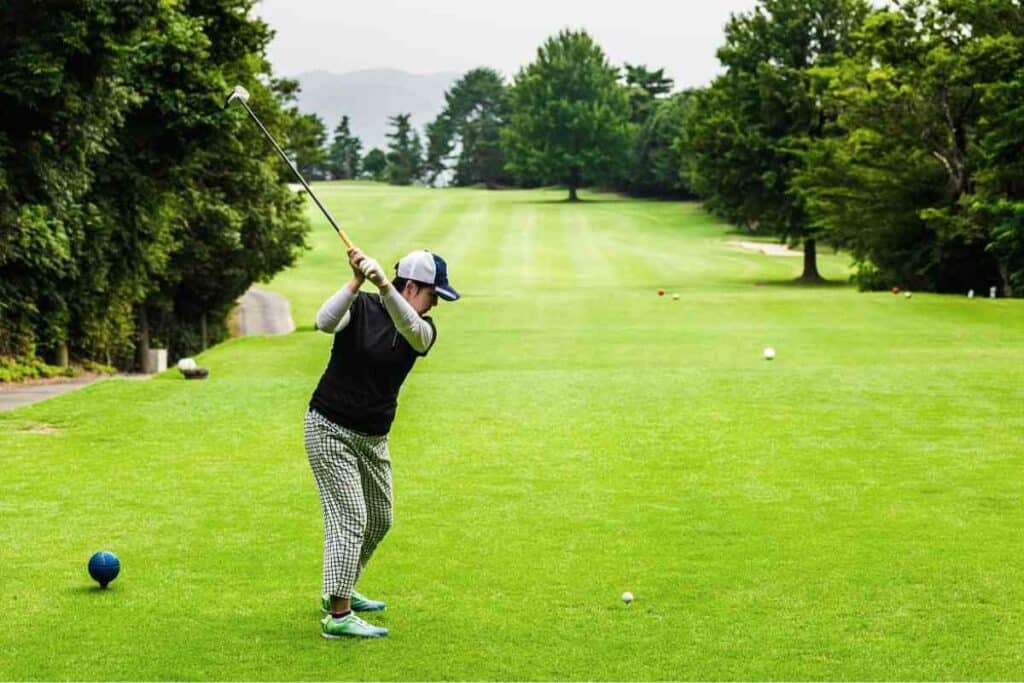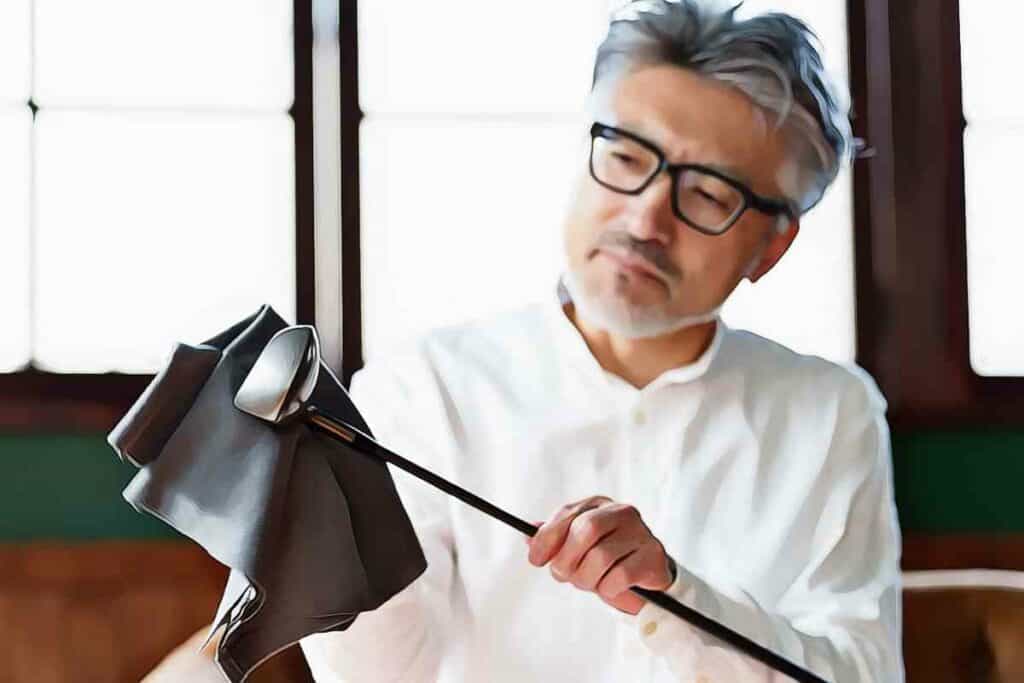When you hear people saying they’re a black belt in judo, it sounds impressive – but what does this actually mean?
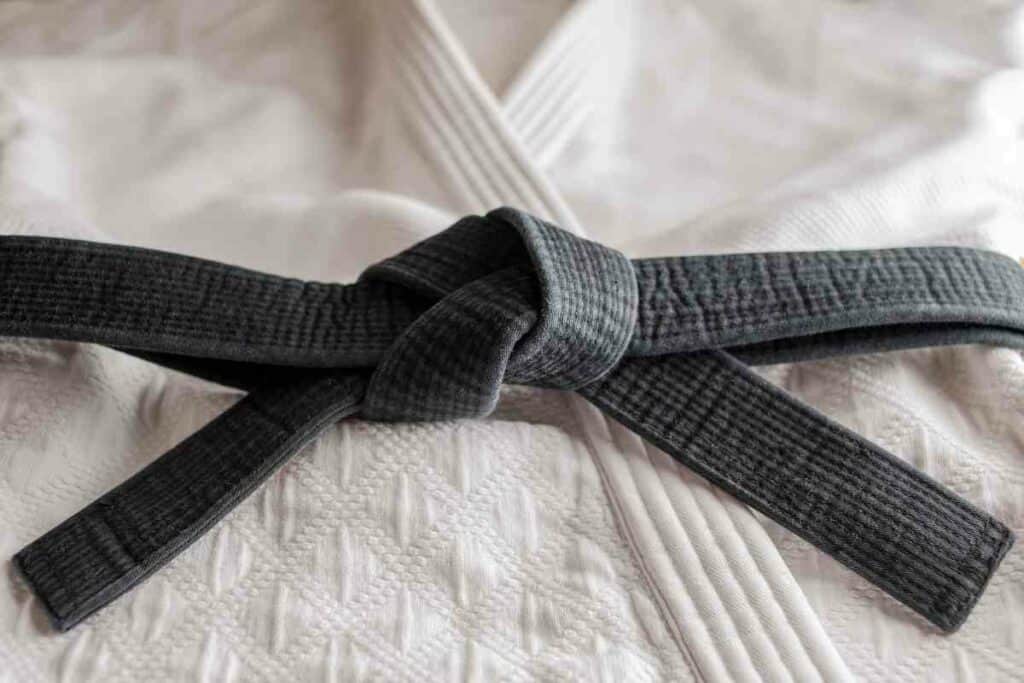
Those unfamiliar with the martial art know that having a black belt means that you’ve mastered the art, but they don’t know what they’ve had to do to get to that level in the first place.
In This Article – We’ll explore judo as a martial art and detail the judo belts requirements at each stage. First though, for those unfamiliar, let’s investigate the background of this fantastic Japanese sport.
Table of Contents
Judo – a Little History
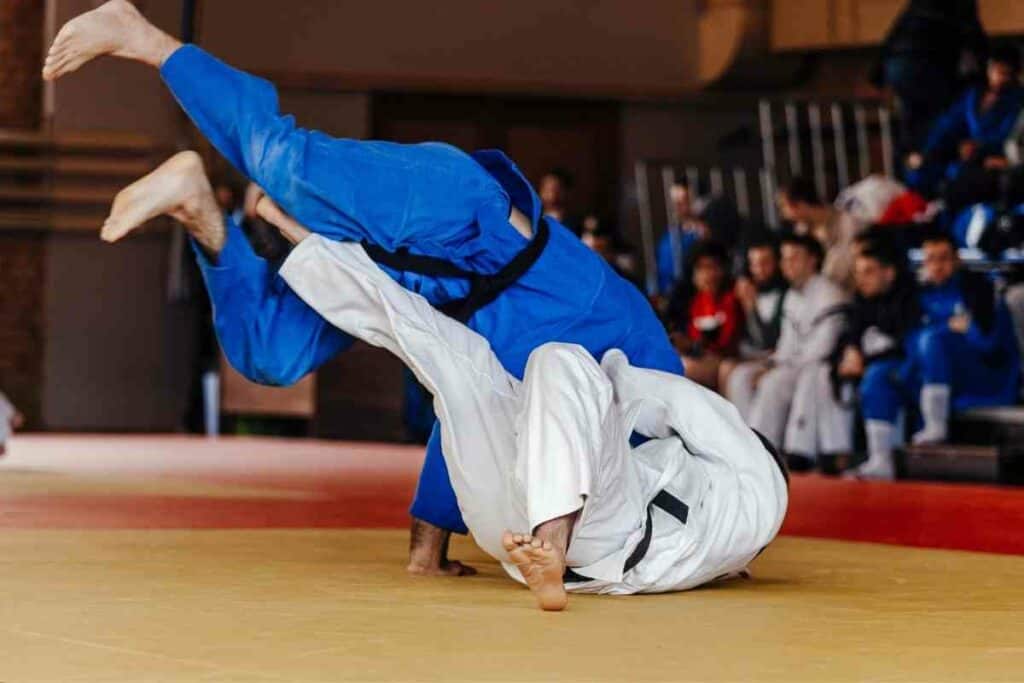
Unlike lots of things that Japan is famous for, like Geisha and Samurai, Judo has only been around a little over a century.
Meaning “gentle way,” this sport is a form of combat that was created by Jigoro Kano in 1882.
It is considered, therefore, to be a modern martial art, and has successfully been a part of the Olympics since 1964.
Step into Japan’s world – shop homes, kitchens, clothing, accessories, and more at the Japan Objects Shop. Experience cultural wonders in every item!
Unlike other martial arts, judo is more eclectic. This martial art places emphasis on free sparring (randori), rather than pre-arranged forms (kata).
It also doesn’t have weapon training or striking.
Originally – This was named Kano after its creator, but it was eventually renamed judo. Someone who practices judo is a “judoka” and the uniform is a “judogi.”
The Objective of Judo and Its Philosophy
Judo competitors aim to throw their opponents, immobilize them, or force them to submit.
There are two main principles in judo:
- “Jita-Kyoei” (mutual welfare and benefit)
- “Seiryoku-Zenyo” (maximum efficient energy use).
“Thus the principle of Judo, from the very beginning, is not one of aggression, but of flowing with things.“
Carl B. Becker
Judo Belts Requirements – Development of the Ranking System
Before judo was created, there was no ranking system at all in any martial art.
Judokas would instead, be presented with a scroll or certificate. The modern ranking system began when Kano awarded the shodan rank to two students one year after creating the martial art.
Yet, there was no difference back then between mudansha (judokas who had not achieved black belt yet) and yudansha (judokas who had achieved black belt ranking).
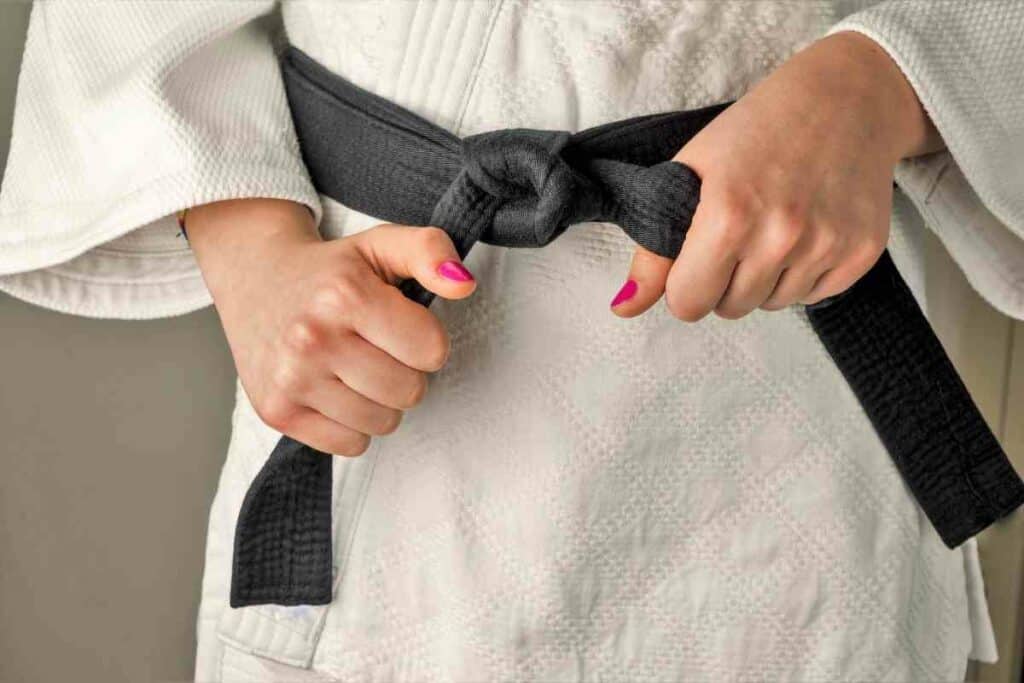
It was in 1886 that Kano began giving his yudansha black belts (obi) to wear, though they weren’t like the ones worn today.
Back then, there was no judogi, and students simply wore a formal kimono. The judogi as we know it now with its modern obi was introduced in 1907.
The only belt colors at this time were white and black.
Judo Belts Now
Nowadays, we’re presented with a series of ranks in judo through which a person passes.
The kyu are student ranks and these are differentiated by obi (belts) of distinct colors.
There are differences in judo practices around the world with regards to ranks and belt colors. Some countries will have over 6 kyu as well as ten different dan or black belt ranks.
Just like school students who pass through a grading system, judo students also passed through the ranks as they progressed and became more proficient at the martial art.
When a judoka receives a black belt, it is the equivalent of him or her graduating from high school.
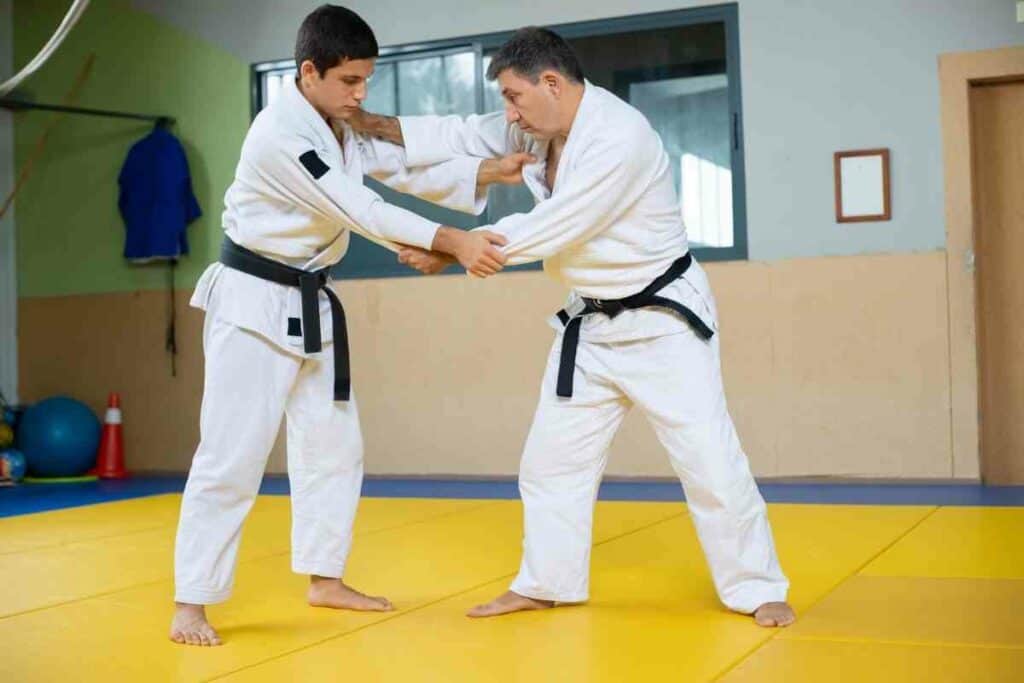
The black obi means that the judoka has learned all the fundamental judo skills that he or she can perform functionally.
Though seen in the public eye as the main goal, having a black belt simply denotes a basic level of judo proficiency. After earning a black belt, the judoka can continue advancing in the martial art.
In 1930 – New belts were created to recognize high-ranking black belts, including sixth degree, seventh degree, and eighth-degree belts as well as a special belt called a Kohaku obi, which was made from alternating white and red panels.
Often, this belt will be worn on special occasions, but the black belt is still the standard.
1943 also saw the introduction of a red belt (optional) to give recognition to 9th degree and 10th-degree yudansha.
Since the creation of the 10th dan, there have only been fifteen people given this prestigious belt.
Colored belts for the levels before the black belt didn’t exist until judo began spreading outside of Japan.
The first colored belts appeared in 1935 and the theory behind them was that students in the west would benefit from a visible progression system.
Judo Belts Requirements in Japan
Unlike in other areas of the world, Japanese judoka wear a belt color relating to their age.
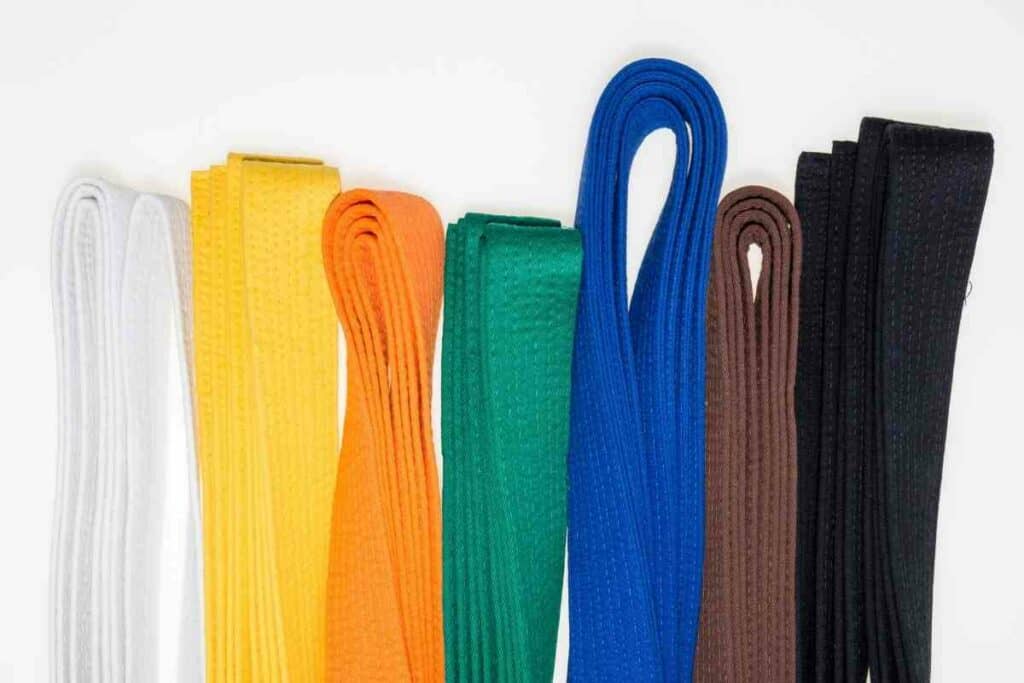
Some clubs only have white belts and black belts, while others might include brown belts for advanced kyu grades, and you might also see green belts for intermediates at the elementary-school level.
Judo Belts Requirements Outside of Japan
Outside of Japan, a ranking system with colored belts has developed and this also varies between nations too.
To simplify things, this is how it is generally broken down.
| Mudansha (non-black belt grades) | ||
| Belt Color | Name | When awarded |
| White belt | Rokyu (6th grade) | To any novice (age 5 and above) |
| Yellow belt | Gokyu (5th grade) | After at least 12 months of being a white belt (age 6 and above) |
| Orange belt | Yonkyu (4th grade) | After at least 12 months of being a yellow belt (age 7 and above) |
| Green belt | Sankyu (3rd grade) | After as much as 1.5 years and 2 years of training as an orange belt (age 9 and above) |
| Blue belt | Nikyu (2nd grade) | After at least two years of training as a green belt |
| Purple/Brown belt | Ikkyu (1st grade) | After at least two years of training as a blue belt |
After going through the Mudansha grades, the judoka can progress through the black belt grades.
| Yudansha (black belt grades) | ||
| Belt Color | Name | Grade |
| Black belt | Shodan | 1st grade (usually 18 and or over) |
| Black belt | Nidan | 2nd grade |
| Black belt | Sandan | 3rd grade |
| Black belt | Yondan | 4th grade |
| Black belt | Godan | 5th grade |
| Black belt | Rokudan | 6th grade |
| Black or red and white | Shichidan | 7th grade |
| Black or red and white | Hachidan | 8th grade |
| Red or black belt | Kudan | 9th grade |
| Red or black belt | Judan | 10th grade |
Judo Training in Japan
Training through the ranks in judo in Japan is a serious business.
Children with Olympic potential in judo enter the system in elementary school and go to board at a special secondary school where they live and breathe judo.
In middle school and high school, their practice revolves around developing the philosophy, the techniques, and the fundamentals of judo.
There are grueling workouts that begin at 6 am and evening practices that last for four hours after school too.
Not all students go on to be Olympians of course, only a handful make it to the professional level each year.
Judo Belt Requirements
To move up a ranking typically takes a year or two.
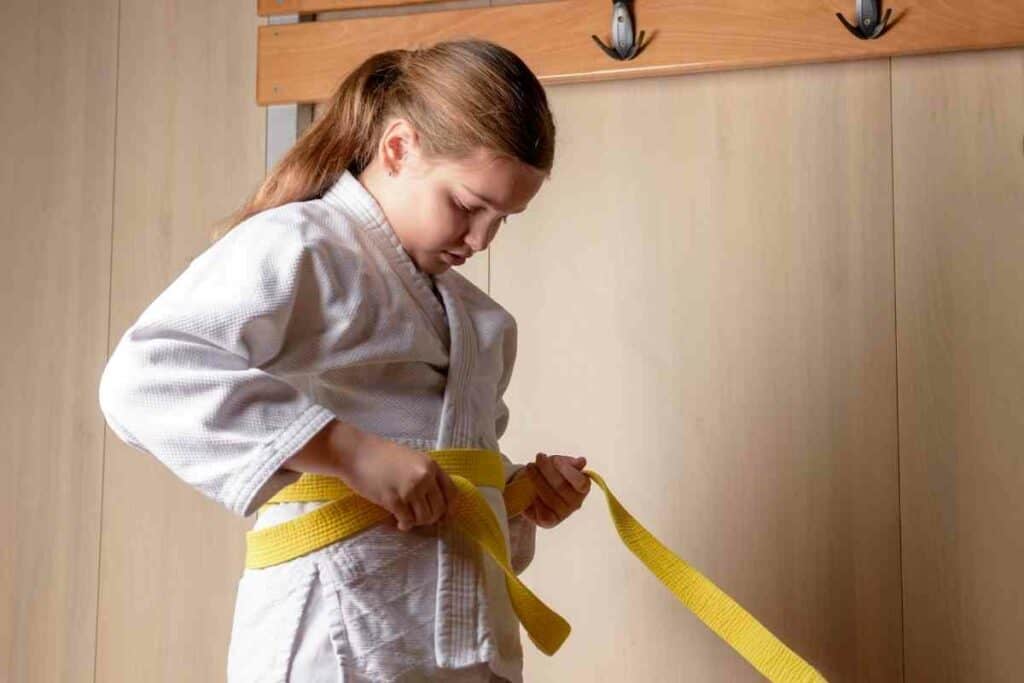
It is possible to move up the ranking more quickly if you’re training many hours per week.
Typically, this is what judoka need to do to complete each level:
- 6th Kyu – the judoka masters light Randori (free practice), Nage-komi (repetitive throwing), and Ukemi (breakfall). They must also know all terminology and explain their meanings, be able to tie the obi, wear the judogi correctly and know the correct bowing procedures.
- 5th kyu (yellow belt) – the judoka perfects light randori, Nage-komi, and Ukemi. They learn a variety of performance skills, including combination techniques. They must also know what goes against the rules.
- 4th kyu (orange belt) – the judoka participates in Randori regularly. They will know combination techniques and counter techniques, Ne-waza (groundwork techniques) (different escapes and arm rolls). At this stage, students must also be aware of safety practices.
- 3rd kyu (green belt) – the judoka enters competitions. Perfect existing techniques and learn new performance skills like Kansetsu-waza, which includes sit back entry, roll over entry, over the shoulder entry, and entry from beneath.
- 2nd kyu (blue belt) – the judoka enters championships. The judoka also learns more fundamental techniques and performance techniques. These include dropping attacks and gripping skills.
- 1st kyu (brown belt) – the judoka competes and participates in Randori levels that prepare for their first Dan grading. For this grade, the judoka develops their technical skills and performance skills further. They must also demonstrate avoidance, attacking defence, and continuous attacking.
Final Thoughts
To outsiders, judo might look simple and fun but there is a lot that judoka have to learn.
Meeting judo belts requirements takes time, patience, and lots of practice. Also, learning doesn’t stop when judoka reach the elusive black belt. There is a saying that learning only just begins at this point.
Overall, judo is a lifestyle activity that promotes both physical and mental harmony in a person. As Jigoro Kano himself declared:
“The principle demands above all that there be order and harmony among people. The final aim of Judo is to inculcate respect for the principles of maximum efficiency and mutual welfare and benefit. Through Judo, persons individually and collectively attain their highest spiritual state while at the same time developing their bodies and learning the art of attack and defence.”
– Jigoro Kano (Judo founder)

